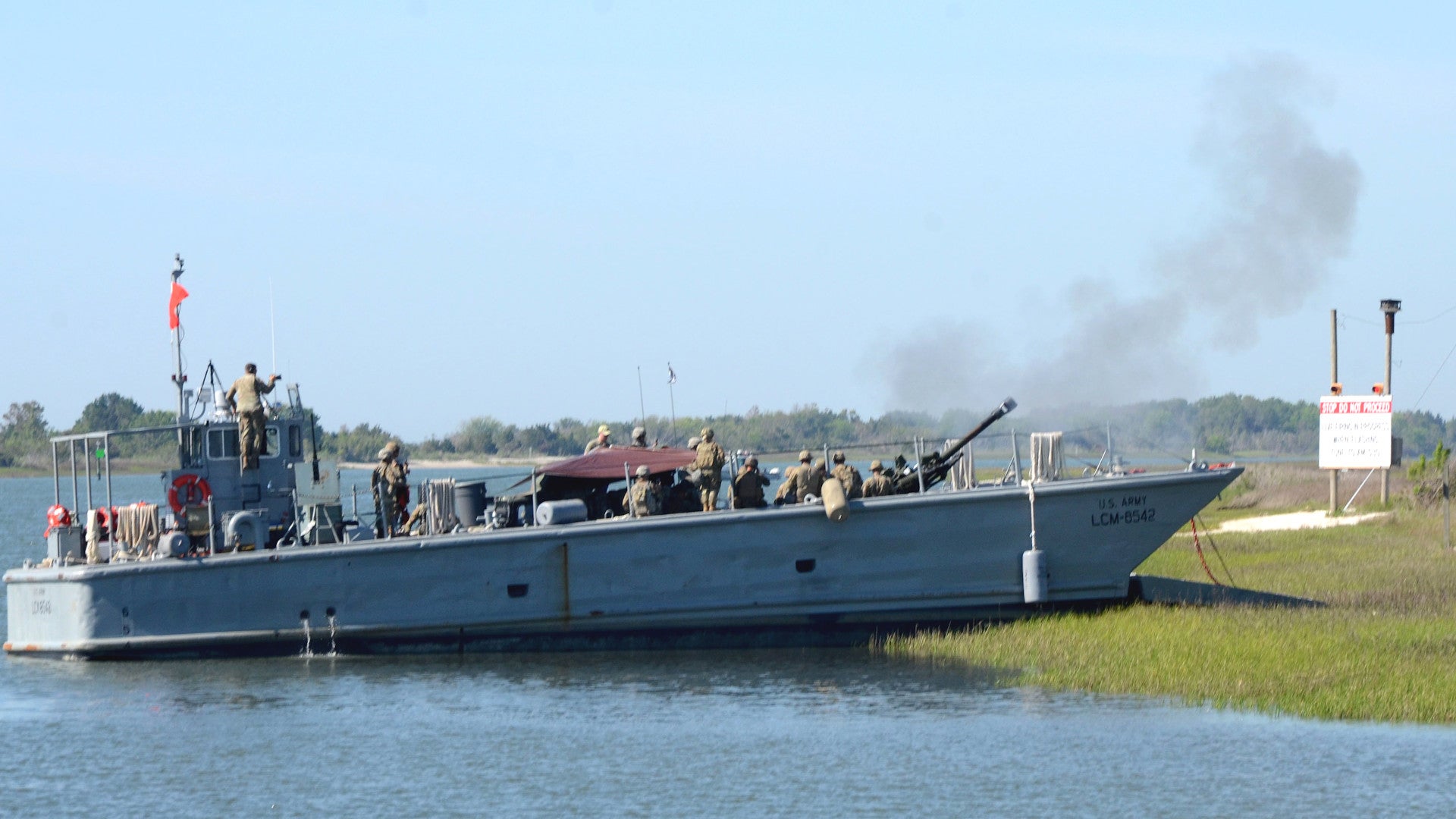The Virginia Army National Guard recently conducted an extremely unusual artillery exercise involving firing a 105mm M119 howitzer from on board a U.S. Army landing craft. The combination effectively provides a mobile fire support system for amphibious operations and during missions in riverine and other littoral environments.
Between Apr. 24 and 25, 2019, elements of the Virginia Army National Guard’s 1st Battalion, 111th Field Artillery Regiment conducted the waterborne artillery exercise, nicknamed Operation Gator, at the U.S. Marine Corps’ Camp Lejeune in North Carolina. The active duty 11th Transportation Battalion, part of the 7th Transportation Brigade (Expeditionary) based at Joint Base Langley-Eustis in Virginia, provided a number of Landing Craft Mechanized Mk 8s (LCM-8) for the drill. The 11th is part of what is often described as the “Army’s Navy,” an obscure, but important array of different watercraft, which you read more about in detail here and here.
The units “received and carried out their fire missions from the Intracoastal Waterway running through Camp Lejeune along the Atlantic Ocean,” a statement from the Virginia National Guard public affairs office accompanying a series of photographs from the exercise explained. “It was the first waterborne artillery mission for the 111th since D-Day during World War II, nearly 75 years ago.”
What was then known as the 111th Field Artillery Battalion took part in the historic Allied invasion of Nazi-occupied France on June 6, 1944, landing with other elements of the National Guard’s 29th Infantry Division at Omaha Beach in Normandy. The unit has undergone a series of organizational changes over the years and today 1st Battalion, 111th Field Artillery is a composite unit with both 105mm M119s and 155mm M777 howitzers. Only the 105mm weapons took part in Operation Gator.
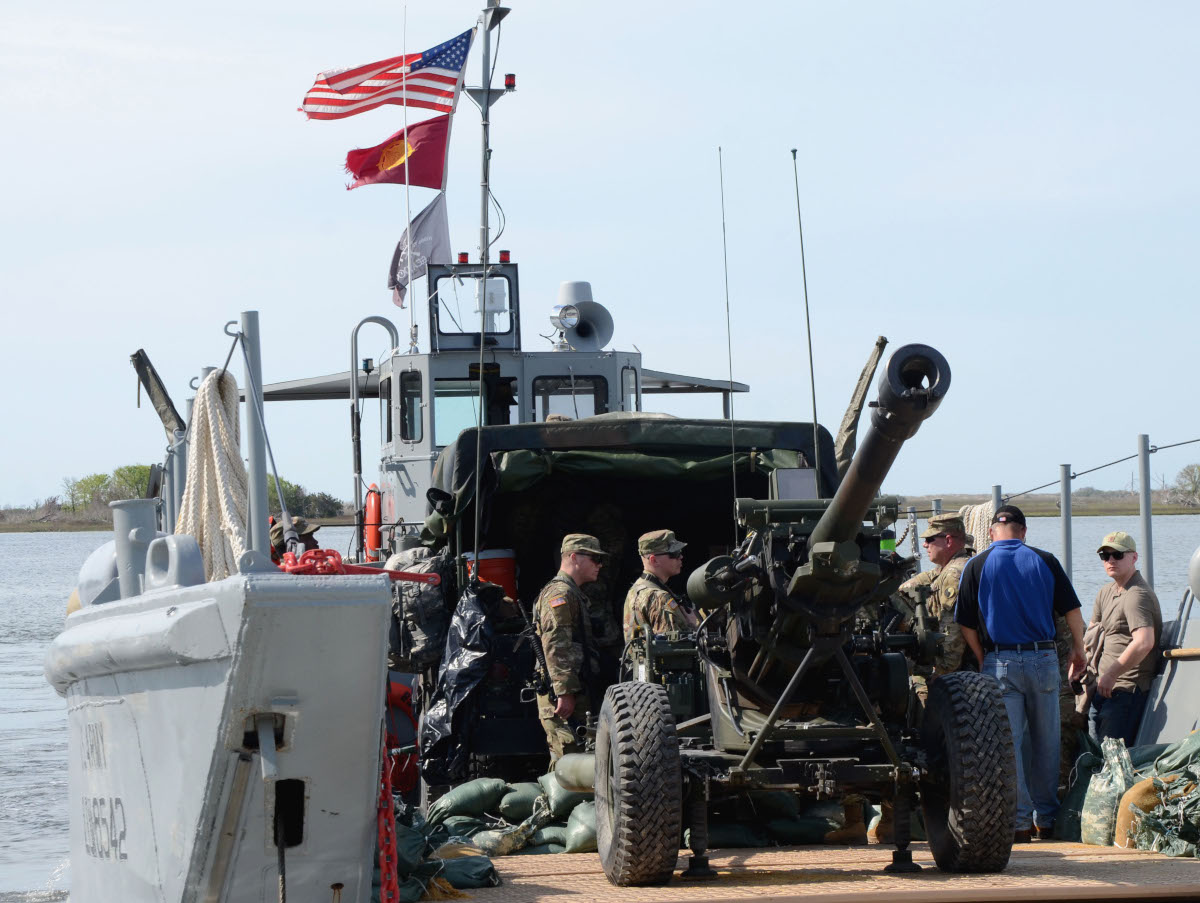
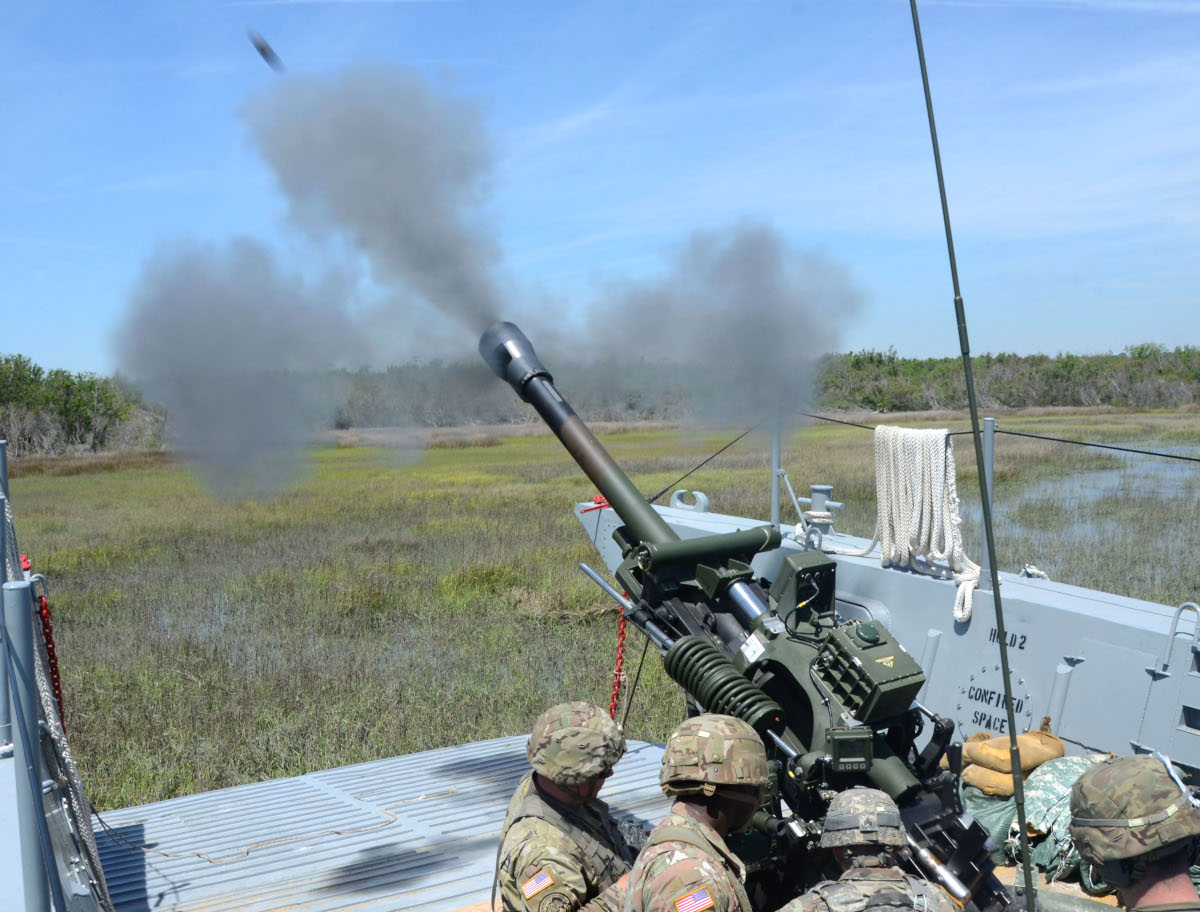
The most obvious advantages of emplacing a 105mm howitzer on an LCM-8 are mobility and a reduction in time it takes to get the gun into action. In a more normal concept of operations, the landing craft would bring a truck towing the weapon to a beach. Afterward, the gun’s crew would have to find a suitable position ashore and get the gun ready to fire.
What the 111th demonstrated at Camp Lejeune is how the LCM-8 could beach itself with the gun fixed in place already and then immediately begin providing fire support. This arrangement also means that the landing craft and howitzer could more readily move to another position as friendly forces advance. That same mobility gives the combination a shoot-and-scoot capability that could improve survivability against countrerattacks, too.
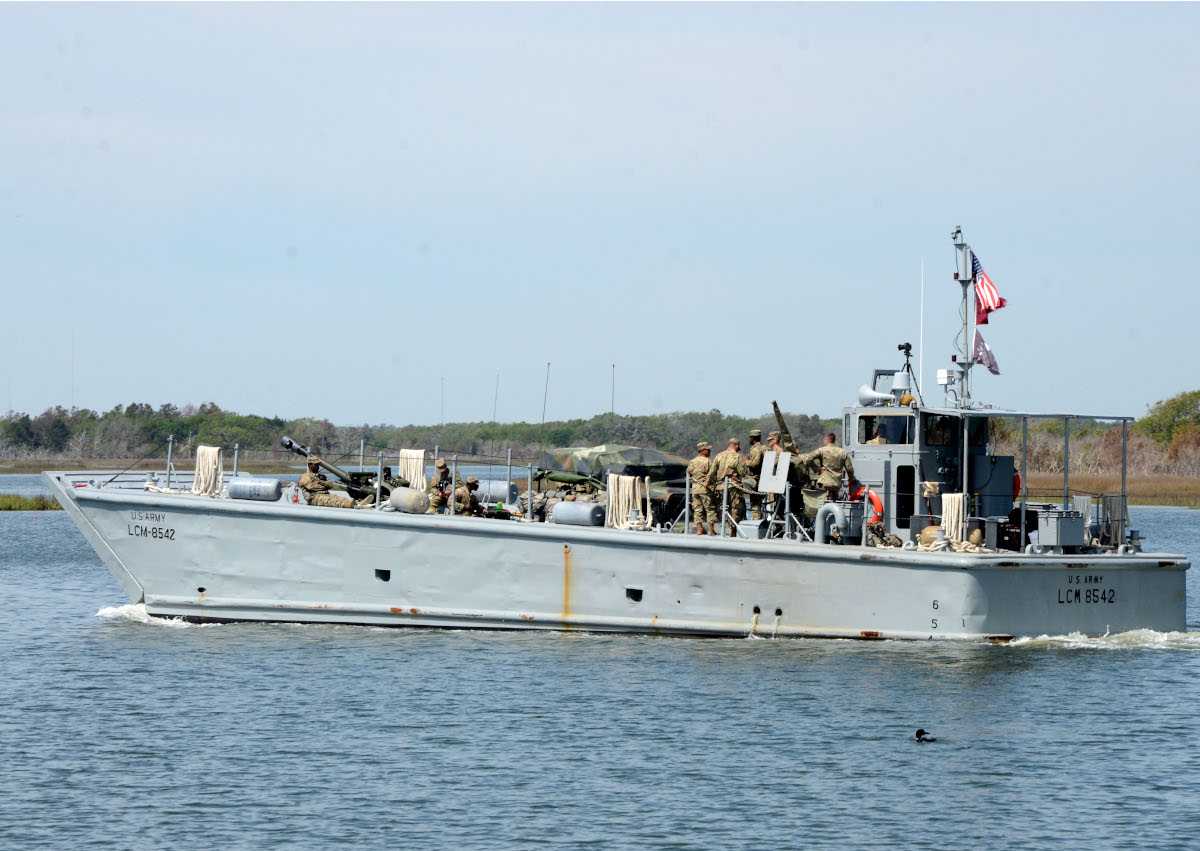

In addition, the LCM-8 provides a stable firing platform regardless of the terrain in the target area. Riverine and other littoral environments often consist of marshes and soft sand that are entirely insufficient to support an artillery piece. The combination of landing craft with mounted gun offers a way to provide immediate artillery support from a landing site no matter what the terrain looks like when forces go ashore.
As the Virginia National Guard’s public affairs office noted, during the landings in Normandy, the Army employed a variety of landing craft-mounted artillery weapons to provide exactly this sort of support during the initial stages of the operation. The U.S. Marine Corps and the Army also made use of similar tactics in the Pacific Theater during World War II.
Amphibious vehicles with large caliber guns, either in purpose-built turrets or improvised mounts, were also used for fire support during amphibious and other waterborne operations during the war and in the years that followed. But after the Korean War, the Army steadily withdrew from the amphibious warfare space, in general.
During the Vietnam War, the idea of waterborne artillery came back into vogue within the Army because of South Vietnam’s extensive networks of rivers and canals and due to the difficulty in find terrain to support firebases deep within the Mekong Delta. Elements of the 9th Infantry Division, which provided the bulk of the U.S. manpower to conduct riverine operations in the Mekong region notably used landing craft with 105mm howitzers in virtually the same way the 111th did just recently at Camp Lejeune.
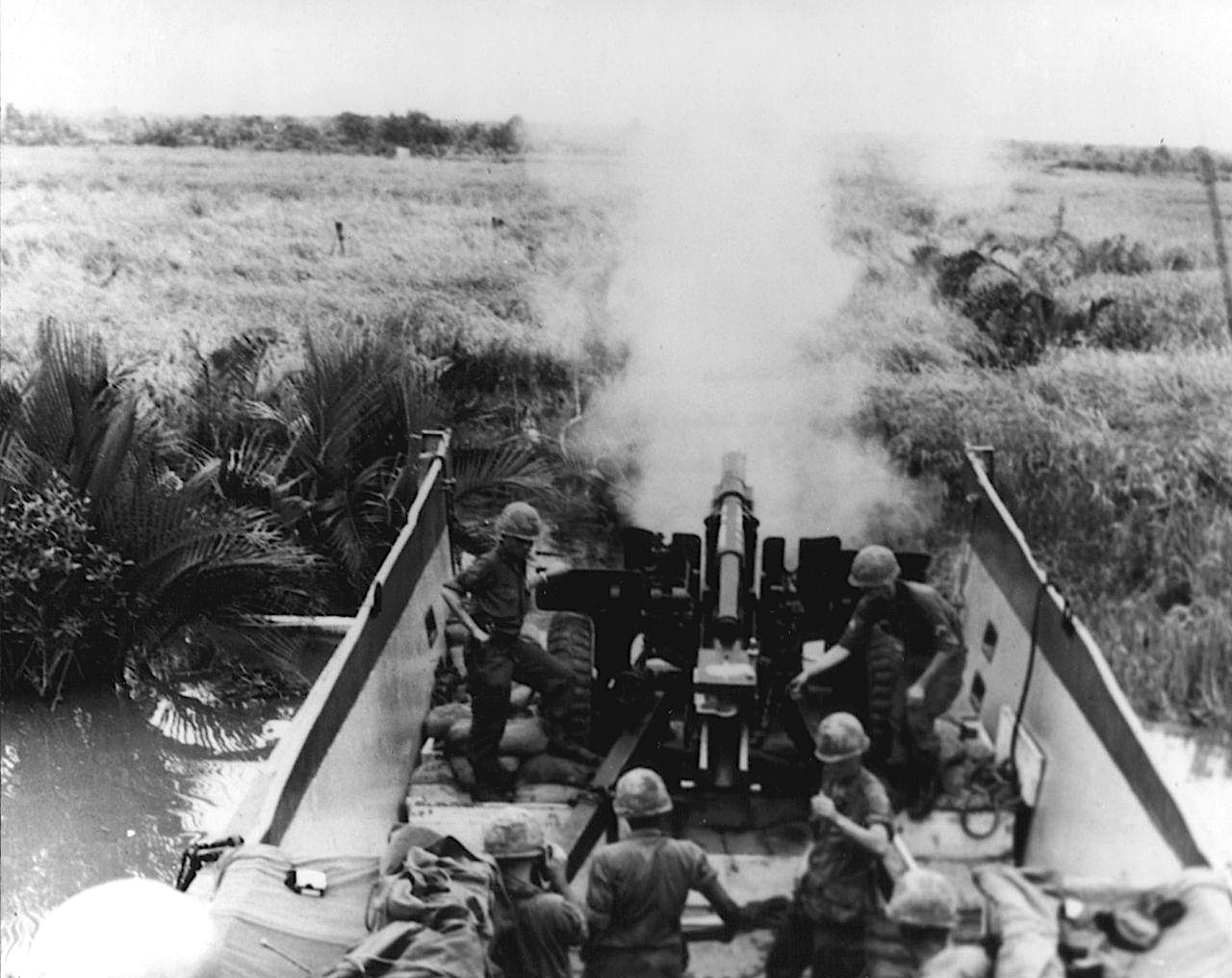
The 9th also eventually employed unpowered artillery barges with firing positions for two 105mm howitzers, as well as living facilities and ammunition storage, to provide more protracted fire support. During mobile operations, Army troops also used airmobile platforms that helicopters could bring into an area of operations to temporarily provide a stable firing position.
Toward the tail-end of the Vietnam War, the Army codified the lessons it had learned regarding riverine warfare, including the use of howitzers on landing craft. One 1971 manual even describes how utilizing an armored 155mm M109 self-propelled howitzer on a landing craft could offer greater flexibility, given the vehicle’s fully traversable turret. It’s not clear if the Army ever did this operationally in South Vietnam.


Unfortunately, in the more than four decades since America’s war in Southeast Asia ended, the idea of utilizing field artillery in this way has once again slipped largely into obscurity. The statement Virginia National Guard’s public affairs office does not say why it has decided to re-explore this concept of operations now.
However, Operation Gator does come at a time when the Army as a whole is once again re-evaluating its role in littoral operations with a particular eye toward the Pacific Region. A waterborne artillery capability could also be valuable in other potential littoral hotspots in the Middle East or Europe.
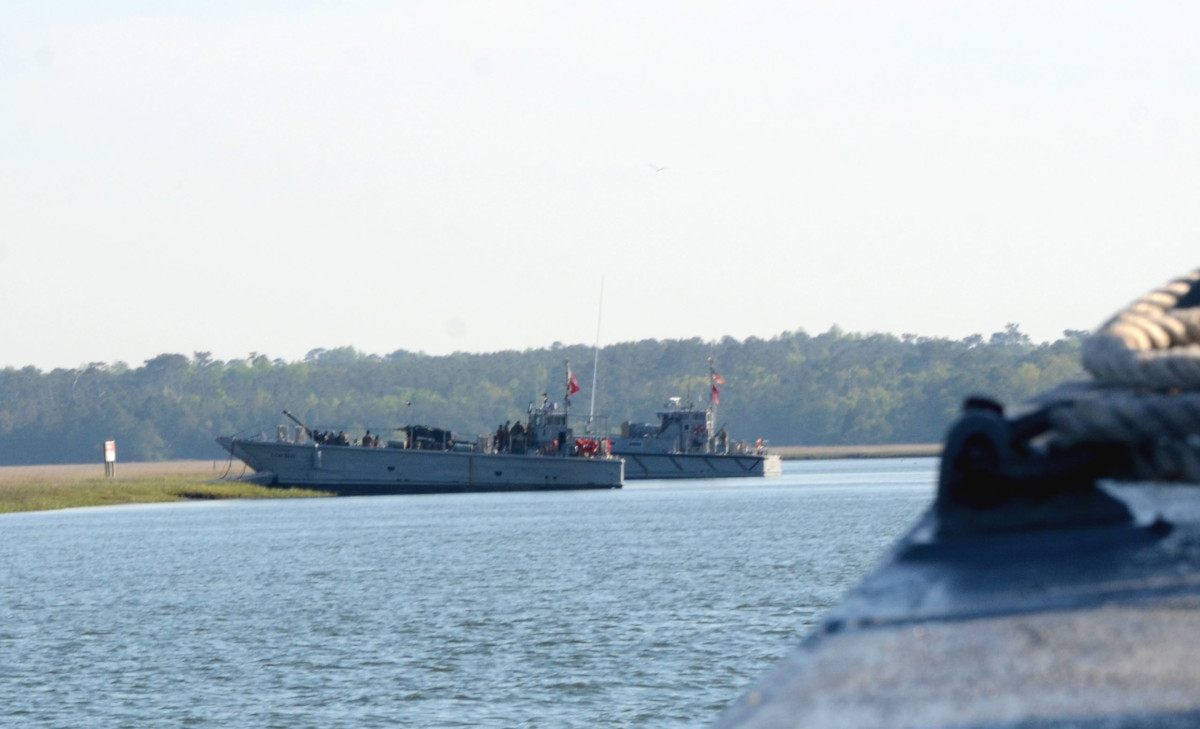
But the aforementioned benefits of landing craft-mounted howitzers, as well as boats carrying other weapons such as precision-guided rocket artillery systems, would be extremely valuable when conducting distributed operations where forces may find themselves fighting on small islands across a broad front in the Pacific. For similar reasons, the Marines have been investigating ways to employ artillery from amphibious ships
off shore and have expressed interest in lighter, more mobile systems that its forces could rapidly airlift ashore.
Another option in the future might be a containerized artillery system that is even easier to install and remove on landing craft as required. Finnish defense contractor Patria already offers just such a system containing a 120mm mortar with an automatic loading system that it has demonstrated mounted on a small landing craft.

The exercise in North Carolina also underscores the unique value that Army watercraft units have to offer. In 2017, the service announced it would finally begin buying new, more capable landing craft to replace the Vietnam War-era LCM-8s. Unfortunately, earlier this year, it emerged that the Army’s top leadership might also be looking to cut funding for watercraft programs and eliminate all active during units to free up funds for other priorities. You can read more about this still-developing situation here.
It remains to be seen how far the Army will go in reviving its waterborne artillery capabilities, but it could become an important part of the service’s vision for operating in the Pacific and other littoral environments, as well as an important argument for preserving the Army’s Navy.
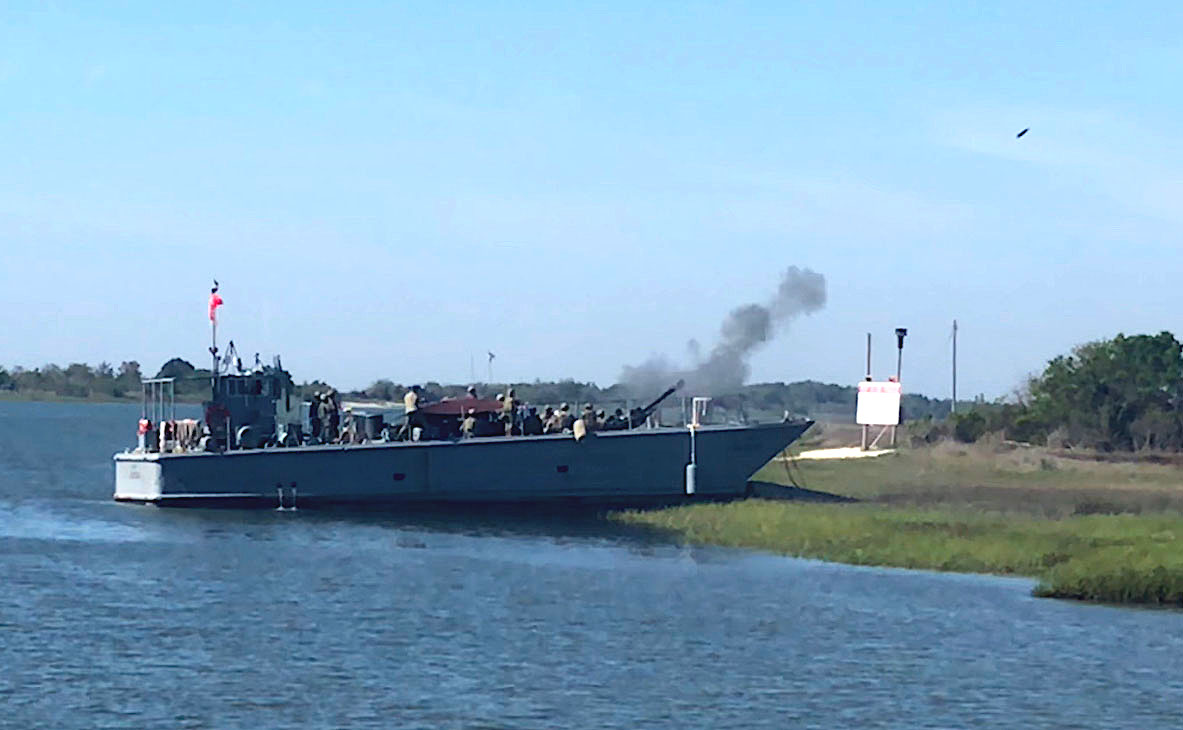
Contact the author: jtrevithickpr@gmail.com
